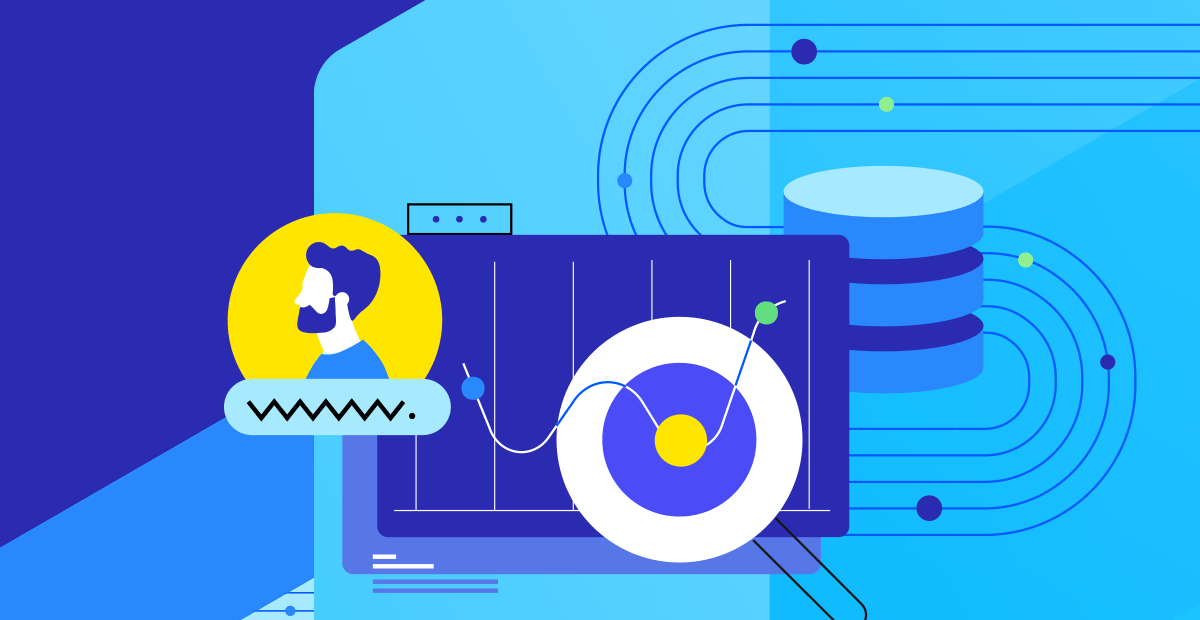Decision-makers want to know everything they can about their enterprise, clients and workforce, focusing on current dynamics to inform decisions that stand the test of time. They need access to real-time, high-quality information, now.
As a result, Chief Data and Information Officers spend over one-fifth of their time on enabling new business with analytics (61% of respondents, “CDO Agenda 2024,” AWS) or producing analytical insights for the organization (43% of respondents). Business Leaders ranked “overwhelming data volumes” and prolonged timeframes to get insights second and fourth among their top data challenges (“The State of Data and Analytics Report,” Salesforce).
Standard insight delivery mechanisms are not only inefficient but also insufficient. Intelligence is no longer locked in charts or limited to numbers. In today's intricate and interconnected landscape, the significance of deep data understanding and analysis cannot be overstated. We need more nuance and context to truly untangle complexities. For that, companies should incorporate time-based, location-based and relationship-based data in their analysis to deliver more actionable insight. This data type trio is what we refer to as connected data.
The best way to deepen our grasp of connected data is through its visualization. Such visualization serves diverse sectors and scenarios—from finance to healthcare—enhancing strategic foresight, risk management and operational efficiency.
The Importance of Visualizing Connected Data
Think of a “Show me the data” moment and the ever-growing demand for ad-hoc reports for business users who need evidence to explain a specific trend that is impacting their business unit’s performance: a decline in sales, a sudden spike in web traffic or customer churn. The report graveyard and the building of new data flows to support business intelligence are a taxing job for data and engineering teams.
But what if you operate in a service industry like healthcare or finance where you need to explain complex processes outside of your organization on a global scale? A standard report or a chart isn’t going to do the job—you will need comprehensive, real-time intelligence. A patient-physician interaction might require access to an electronic healthcare record, previous treatments, medications and complications, but also family history, insurance provider or care coverage.
As we try to navigate an ever-complex world, capturing and visualizing information in context can have a significant impact on your strategy or service:
- Deep Understanding: Allows for a nuanced understanding of relationships between data entities like people, locations and time, identifying trends and irregularities that might escape standard visualization tools.
- Intelligent Decision-Making: Observing entity interactions over time aids in pinpointing improvement areas, process optimizations and potential risks or opportunities.
- Effective Communication: Visual representations of complex data make insight accessible to diverse stakeholders, especially business users who are less tech- or data-savvy, fostering improved collaboration.
Visualizing the progression of connected data is paramount. It elevates data analysis by revealing hidden patterns and trends, informing decisions and facilitating communication. Connected data encompasses information that is interlinked through networks, meaning and hierarchies—all of which require different techniques to be visually presented.
Techniques for Presenting Interconnected Data
Techniques like temporal graphs and interactive visualizations, coupled with powerful search, empower us to leverage connected data for innovation, competitive edge and insight across various domains.
Timelines
Timelines are a technique for visualizing temporal data that helps data scientists and analysts perform temporal or time-based analysis. Temporal analysis is used for tracking progress, tracing events and distribution over time or across geographies and predicting and allocating resources for definite periods. To do that, temporal data is rarely used in isolation from other data types. When you present temporal data on a timeline, you are likely to use it as a dimension like sequence, seasonality or frequency for other data types or analyses to add depth to your insight.
Temporal data is often used in conjunction with graph or geospatial data to investigate use cases such as how a particular event unfolded or trace behaviors like the onset and spread of a disease over time. For example, in law enforcement, timelines can help departments identify high-crime areas and link them to specific timeframes, link crimes to individuals and gain insights into crime behavior. In terms of inventory and resource planning, if demand tends to increase in a particular month, in an area or around an event, extra resources can be allocated to support steady supply.
Geospatial Mapping
Maps are a household tool among analysts and a universally powerful visualization technique for geospatial data analysis. Interactive maps display data in a geospatial context and help us explore and quickly grasp trends in relation to real-world locations, enhancing situational awareness.
We just mentioned that geospatial data is frequently used with time-based data to look at data distribution in relation to locations and how that changes over time in a wide variety of use cases. Some relationships and connections cannot be understood without answering the “where” question, and so we need to be able to explore dimensions like distance, proximity and density to crack hard cases. By combining maps with timelines, you can explore complex connections between many diverse data entities and types to get a bird’s-eye view of what’s going on.
Geospatial data mapping enables a wide range of scenarios from weather forecasts and flight tracking systems to logistics and customer services. It is also a great way to segment and filter your data by geographical areas. For example, you can see where service disruptions have occurred frequently in the past year, investigate potential reasons and optimize your maintenance resources in that area. Maybe you want to see your revenue growth distribution by region but also who your best-performing employee is for a region.
Network Graphs
Network graphs are fascinating visualizations of people, things and concepts and how they are connected. They present semantic data and show the relationships between entities. A node represents each entity, while links or edges, represent the connection between the nodes. Network graphs can be used to present anything from the most straightforward hierarchy, like a botanical taxonomy to a family tree to the most sophisticated domains like epidemiology or bioinformatics.
Network graphs facilitate a unique and deep understanding of our data landscape and allow us to explore complex relationships, giving us the much-needed context when critical decisions need to be made.
Interactive Charts
Charts need no introduction. They have proven to be the most effective method for presenting and explaining structured data. Charts work perfectly as a stand-alone visualization technique and a complementary element in complex visualization scenarios. They are a foundational instrument for any reporting, including financial results, regulatory reports, trends and comparisons of multivariable data and more.
The way these sophisticated analyses can be done is by combining the different visualization techniques we mentioned and the data they present into dynamically integrated power couples that work together to tell complete stories. Examples of such pairs are geo-temporal visualizations that combine maps with timelines or temporal graphs that combine graph visualization with temporal data.
Complex Data Visualization Challenges
Most commercially available data exploration and BI tools are not equipped to deal with more than one aspect of data at a time. Think of your typical business intelligence tools that only use charts and binary data. The result is a flat and partial representation of the landscape, leaving the much-sought-after context out of the picture so organizations resort to DIY solutions.
Data scientists have been using open-source software or make-shift solutions like animated scatterplots and pivot+heatmap combinations to present time-related data in relation to real-world locations. Often, these are plotted on a single graph, hacking custom code and integrating different tools to answer the need for an intricate and complex data exploration—a hard challenge to gain or clearly communicate insight.
Another pesky challenge for data teams is the hairball effect. When displaying vast amounts of data in a single graph, we run into a cluttered interface where no clear pattern can be spotted. That’s why a powerful search with enough facets is necessary to help us fetch and filter the data and get to the level that we need.
To add to that, as organizations add more data sources to enrich and contextualize their information for intelligence, their data and enterprise stack become unmanageably complex, deepening the silo effect, while the growing costs of integration and maintenance jeopardize their margins.
Organizations need a comprehensive data exploration tool that:
- Is fully integrated with their data stack and can work with the full breadth of data formats and sources
- Facilitates large-scale and context-rich data exploration through interactive, dynamic search and visualization
- Helps data users and decision-makers uncover unique insights and relationships through visually rich, user-friendly applications
Introducing MarkLogic FastTrack: The Connected Data Visualization UI Toolkit
Our customers are Global 2000 businesses and public sector organizations who work with vast amounts of complex data they need to make sense of. We know how critical it is for them to see the world and their organization through that data to enable critical operations and innovation. This is why our team is excited to announce the release of Progress MarkLogic FastTrack—our connected data visualization UI toolkit.
FastTrack emerges out of the need to help customers visually explore all their large and diverse data in context to extract deeper insights. Building upon our steady 20-year track record of empowering companies to unlock value from complex data, FastTrack adds data visualization and UI development capabilities on top of our multi-model data and native search platform to open new avenues for decision intelligence.
MarkLogic FastTrack is a React UI development toolkit designed for developers and data users to collaborate on creating scalable, interactive and visually compelling data exploration interfaces for even easier access to all enterprise data.
The toolkit features ready-to-use, customizable UI components that enable development teams to assemble the functionality mix they need and deliver end-user applications up to 90% faster than starting from scratch. The integration with MarkLogic Server significantly simplifies app development and decouples business logic from the data model with a pre-built data access layer.
Data users and decision-makers, on the other hand, can search, explore and analyze all dimensions of their connected data in an interactive, user-friendly interface. They can combine and cluster data exploration techniques to navigate and understand large amounts of complex data and gain deep insights into underlying patterns and relationships.
The composable approach to custom app building favors agility and developer productivity, leading to:
Faster Time to Insight - Advanced visualization techniques let you search and explore all your data in context and at scale to uncover unique insights.
Simplified Development - Pre-built data access layer, customizable UI components and sample apps help cut development time by up to 90%.
Focused Decision-Making - Support for ample data types lets you leverage the right data to inform rapid progress on new initiatives and understand critical operations.
Applications built with FastTrack can help trace back events, more securely track real-time movement, investigate and help prevent fraud or disaster, monitor critical information and more.
Get Started with FastTrack Today
The world of data is infinitely complex but also beautifully compelling. If you’re looking to empower your teams with sharper intelligence, learn how MarkLogic FastTrack can help tell complete stories so you can see exactly what’s going on.
Explore FastTrack and contact us to get started today.

Sophia Kirova
Sophia is the Product Marketing Specialist for Progress MarkLogic. She brings more than 10 years of storytelling and crafting user experiences in the tech industry, currently focusing on product positioning and go-to-market strategy and content. Things that replenish her creative juices include good conversations, day hikes, bike rides and gallery visits.
Related Tags
Related Articles

Latest Stories in Your Inbox
Subscribe to get all the news, info and tutorials you need to build better business apps and sites
